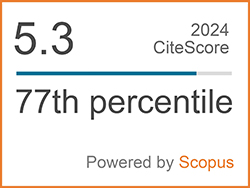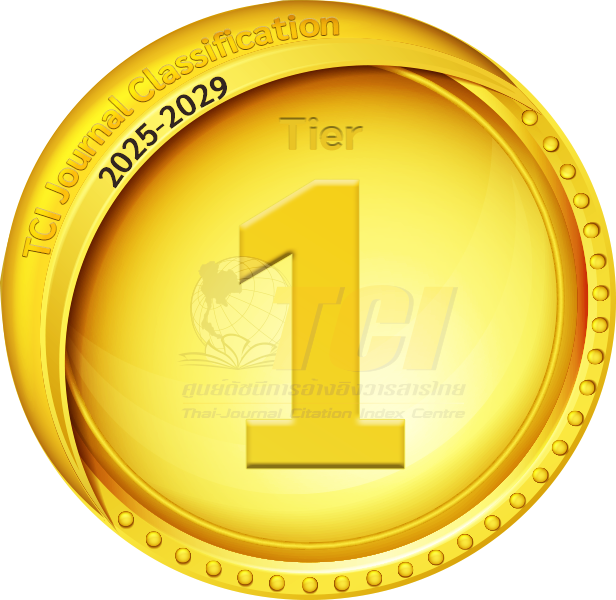Improvement of 3D Printing Elongation Using a Continuous Vibrator Device
Abstract
Keywords
[1] J. Liu, A. T. Gaynor, S. Chen, Z. Kang, K. Suresh, A. Takezawa, L. Li, J. Kato, J. Tang, C. C. L. Wang, L. Cheng, X. Liang, and A. C. To, “Current and future trends in topology optimization for additive manufacturing,” Structural and Multidisciplinary Optimization, vol. 57, no. 6, pp. 2457–2483, Jun. 2018, doi: 10.1007/s00158-018-1994-3.
[2] A. Garg and A. Bhattacharya, “An insight to the failure of FDM parts under tensile loading: finite element analysis and experimental study,” International Journal of Mechanical Sciences, vol. 120, pp. 225–236, Jan. 2017, doi: 10.1016/ j.ijmecsci.2016.11.032.
[3] P. Zhang, J. Liu, and A. C. To, “Role of anisotropic properties on topology optimization of additive manufactured load bearing structures,” Scripta Materialia, vol. 135, pp. 148–152, Jul. 2017, doi: 10.1016/j.scriptamat. 2016.10.021.
[4] K.-M. M. Tam and C. T. Mueller, “Additive manufacturing along principal stress lines,” 3D Printing and Additive Manufacturing, vol. 4, no. 2, pp. 63–81, Jun. 2017, doi: 10.1089/3dp. 2017.0001.
[5] A. Dogru, A. Sozen, G. Neser, and M. O. Seydibeyoglu, “Effects of aging and infill pattern on mechanical properties of hemp reinforced PLA composite produced by fused filament fabrication (FFF),” Applied Science and Engineering Progress, vol. 14, no. 4, pp. 651–660, 2021, doi: 10.14416/j.asep.2021.08.007
[6] Y. Jin, Y. He, G. Xue, and J. Fu, “A parallel-based path generation method for fused deposition modeling,” The International Journal of Advanced Manufacturing Technology, vol. 77, no. 5–8, pp. 927–937, Mar. 2015, doi: 10.1007/s00170-014-6530-z.
[7] S. R. Rajpurohit and H. K. Dave, “Analysis of tensile strength of a fused filament fabricated PLA part using an open-source 3D printer,” The International Journal of Advanced Manufacturing Technology, vol. 101, no. 5–8, pp. 1525–1536, Apr. 2019, doi: 10.1007/ s00170-018-3047-x.
[8] A. Dhandapani, S. Krishnasamy, R. Nagarajan, S. M. K. Thiagamani, and C. Muthukumar, “Study on the inter-laminar shear strength and contact angle of glass fiber/ABS and glass fiber/carbon fiber/ABS hybrid composites,” Applied Science and Engineering Progress, vol. 16, no. 3, 2023, doi: 10.14416/j.asep.2023.02.004.
[9] F. S. Shahar, M. T. H. Sultan, A. U. M. Shah, S. N. A. Safri, “A comparative analysis between conventional manufacturing and additive manufacturing of ankle-foot orthosis,” Applied Science and Engineering Progress, vol. 13, no. 2, 2020, doi: 10.14416/j.asep.2020.03.002.
[10] R. J. Zaldivar, D. B. Witkin, T. McLouth, D. N. Patel, K. Schmitt, and J. P. Nokes, “Influence of processing and orientation print effects on the mechanical and thermal behavior of 3D-printed ULTEM® 9085 material,” Additive Manufacturing, vol. 13, pp. 71–80, Jan. 2017, doi: 10.1016/j.addma.2016.11.007.
[11] Y. Song, Y. Li, W. Song, K. Yee, K.-Y. Lee, and V. L. Tagarielli, “Measurements of the mechanical response of unidirectional 3D-printed PLA,” Materials & Design, vol. 123, pp. 154–164, Jun. 2017, doi: 10.1016/j.matdes. 2017.03.051.
[12] S. Ravindrababu, Y. Govdeli, Z. W. Wong, and E. Kayacan, “Evaluation of the influence of build and print orientations of unmanned aerial vehicle parts fabricated using fused deposition modeling process,” Journal of Manufacturing Processes, vol. 34, pp. 659–666, Aug. 2018, doi: 10.1016/j.jmapro.2018.07.007.
[13] A. Dulaj, S. Peeters, P. Poorsolhjouy, T. A. M. Salet, and S. S. Lucas, “Combined analytical and numerical modelling of the electrical conductivity of 3D printed carbon nanotube-cementitious nanocomposites,” Materials & Design, vol. 246, Oct. 2024, Art. no. 113324, doi: 10.1016/j.matdes.2024.113324.
[14] A. Pandian and S. Jailani, “Development and investigation of jute/linen fibre reinforced polymer composite,” in the International Conference on Advances in Design, Materials, Manufacturing and Surface Engineering for Mobility, 2019, pp. 2019-28–0171, doi: 10.4271/ 2019-28-0171.
[15] Z. Weng, J. Wang, T. Senthil, and L. Wu, “Mechanical and thermal properties of ABS/montmorillonite nanocomposites for fused deposition modeling 3D printing,” Materials & Design, vol. 102, pp. 276–283, Jul. 2016, doi: 10.1016/j.matdes.2016.04.045.
[16] Z. Guo, Z. Hou, X. Tian, W. Zhu, C. Wang, M. Luo, A. V. Malakhov, A. N. Polilov, D. Zhi, H. Ding, and H. Lan, “3D printing of curvilinear fiber reinforced variable stiffness composite structures: A review,” Composites Part B: Engineering, vol. 291, Art. no. 112039, Feb. 2025, doi: 10.1016/j.compositesb.2024.112039.
[17] Y. Alex, N. C. Divakaran, I. Pattanayak, B. Lakshyajit, P. V. Ajay, and S. Mohanty, “Comprehensive study of PLA material extrusion 3D printing optimization and its comparison with PLA injection molding through life cycle assessment,” Sustainable Materials and Technologies, vol. 43, Apr. 2025, Art. no. e01222, doi: 10.1016/j.susmat.2024.e01222.
[18] R. A. Wach, P. Wolszczak, and A. Adamus‐Wlodarczyk, “Enhancement of mechanical properties of FDM‐PLA parts via thermal annealing,” Macromolecular Materials and Engineering, vol. 303, no. 9, Sep. 2018, Art. no. 1800169, doi: 10.1002/mame.201800169.
[19] A. Tofangchi, P. Han, J. Izquierdo, A. Iyengar, and K. Hsu, “Effect of ultrasonic vibration on interlayer adhesion in fused filament fabrication 3D printed ABS,” Polymers, vol. 11, no. 2, p. 315, Feb. 2019, doi: 10.3390/polym11020315.
[20] R. P. Wool, B.-L. Yuan, and O. J. McGarel, “Welding of polymer interfaces,” Polymer Engineering & Science, vol. 29, no. 19, pp. 1340–1367, 1989, doi: 10.1002/pen.760291906.
[21] Y. Yan, R. Zhang, G. Hong, and X. Yuan, “Research on the bonding of material paths in melted extrusion modeling,” Materials & Design, vol. 21, no. 2, pp. 93–99, Apr. 2000, doi: 10.1016/S0261-3069(99)00058-8.
[22] N. Aliheidari, J. Christ, R. Tripuraneni, S. Nadimpalli, and A. Ameli, “Interlayer adhesion and fracture resistance of polymers printed through melt extrusion additive manufacturing process,” Materials & Design, vol. 156, pp. 351–361, Oct. 2018, doi: 10.1016/j.matdes. 2018.07.001.
[23] R. H. Sanatgar, C. Campagne, and V. Nierstrasz, “Investigation of the adhesion properties of direct 3D printing of polymers and nanocomposites on textiles: Effect of FDM printing process parameters,” Applied Surface Science, vol. 403, pp. 551–563, May 2017, doi: 10.1016/j.apsusc.2017.01.112.
[24] V. Kishore, C. Ajinjeru, A. Nycz, B. Post, J. Lindahl, V. Kunc, and C. Duty, “Infrared preheating to improve interlayer strength of big area additive manufacturing (BAAM) components,” Additive Manufacturing, vol. 14, pp. 7–12, Mar. 2017, doi: 10.1016/j.addma. 2016.11.008.
[25] A. K. Ravi, A. Deshpande, and K. H. Hsu, “An in-process laser localized pre-deposition heating approach to inter-layer bond strengthening in extrusion based polymer additive manufacturing,” Journal of Manufacturing Processes, vol. 24, pp. 179–185, Oct. 2016, doi: 10.1016/j.jmapro.2016.08.007.
[26] R. Mishra, W. B. Powers, and K. Kate, “Comparative study of vibration signatures of FDM 3D printers,” Progress in Additive Manufacturing, vol. 8, no. 2, pp. 205–209, Apr. 2023, doi: 10.1007/s40964-022-00323-5.
[27] M. Kam, H. Saruhan, and A. İpekci, “Investigation the effects of 3D printer system vibrations on mechanical properties of the printed products,” Sigma Journal of Engineering and Natural Sciences, vol. 36, pp. 655–666, Sep. 2018.
[28] I. E. Gunduz, M. S. McClain, P. Cattani, G. T.-C. Chiu, J. F. Rhoads, and S. F. Son, “3D printing of extremely viscous materials using ultrasonic vibrations,” Additive Manufacturing, vol. 22, pp. 98–103, Aug. 2018, doi: 10.1016/j.addma.2018.04.029.
[29] P. Krishnasamy, P. C. K. Arvinda, G. J. T. Rajamurugan, A. Maniyambath, and C. J. Kesav, “Dynamic mechanical behavior of mono/synthetic-natural fiber composites—a review,” Engineering Research Express, vol. 4, no. 4, Oct. 2022, Art. no. 042001, doi: 10.1088/ 2631-8695/ac9bcd.
[30] M. N. Shunmugam, S. Sankaranarayanan, N. Pandiarajan, B. K. Parrthipan, and B. Pandiarajan, “Enhancing mechanical properties of PLA filaments through orange peel powder reinforcement: Optimization of 3D printing parameters,” Applied Science and Engineering Progress, vol. 17, no. 4, Aug. 2024, doi: 10.14416/j.asep.2024.08.011.
[31] T. Sangkharat and L. Techawinyutham, “Development of screw-based 3D printing machine and process experiments for short fiber reinforced polymer composites,” Applied Science and Engineering Progress, vol. 17, no. 2, Nov. 2023, doi: 10.14416/j.asep.2023.11.005.
DOI: 10.14416/j.asep.2025.05.004
Refbacks
- There are currently no refbacks.
 Applied Science and Engineering Progress
Applied Science and Engineering Progress







